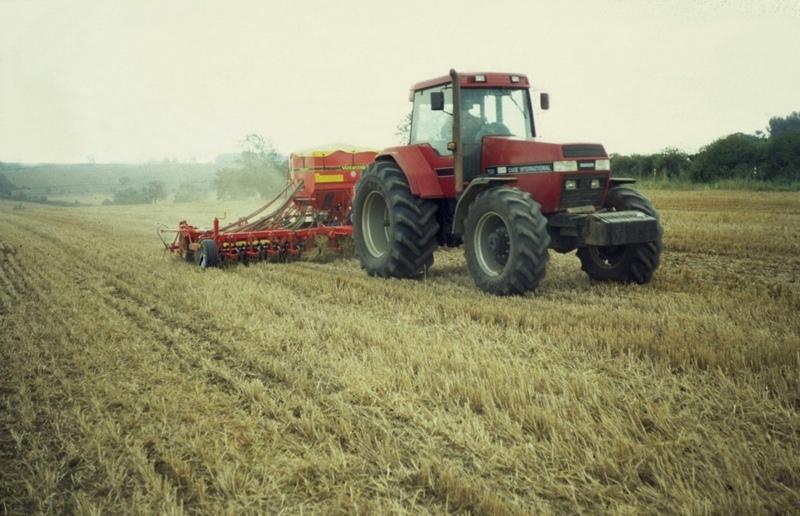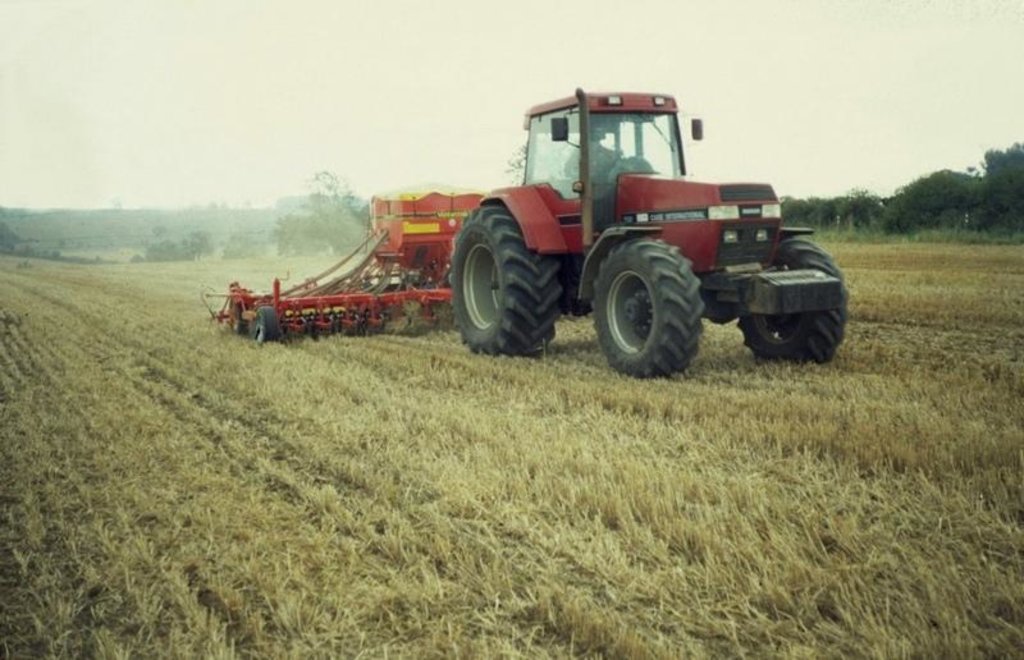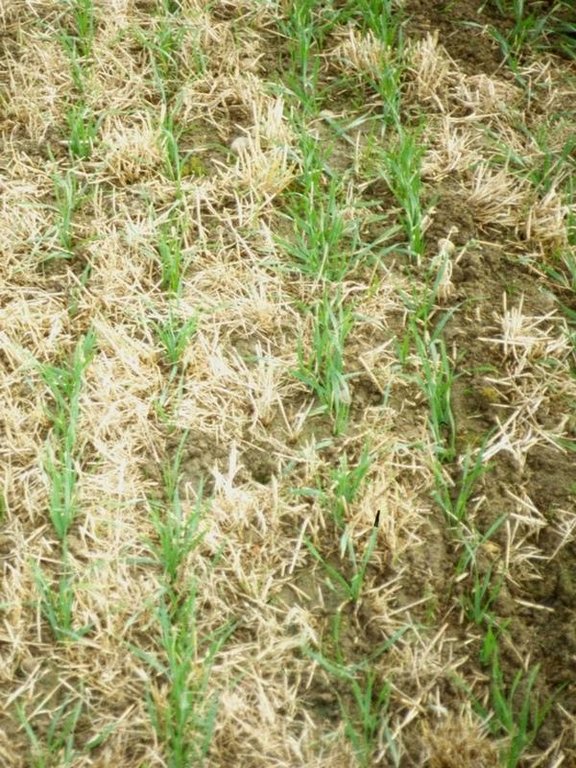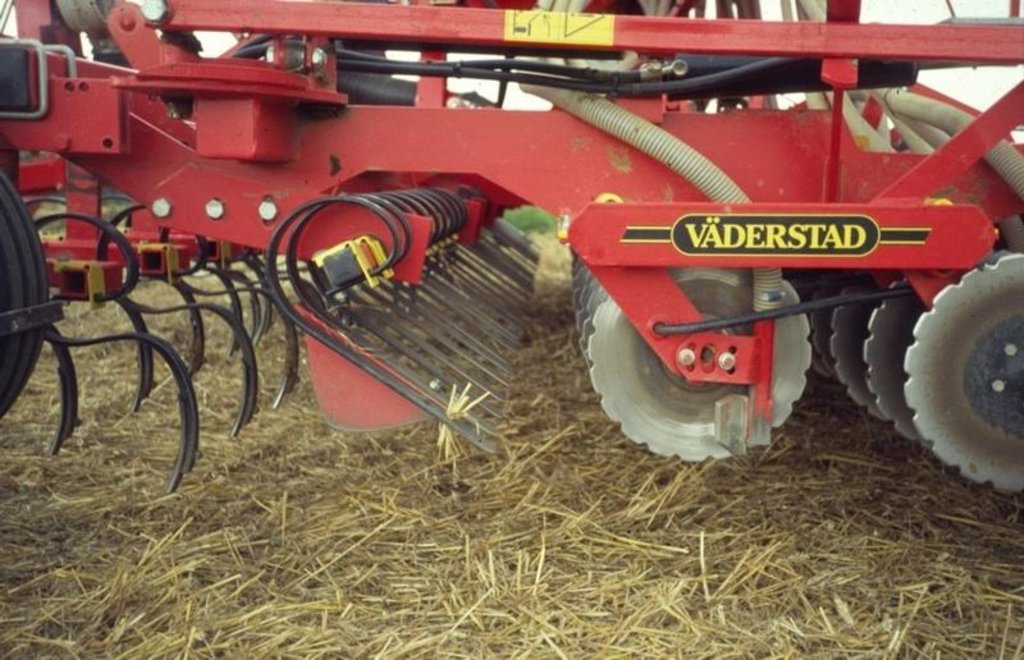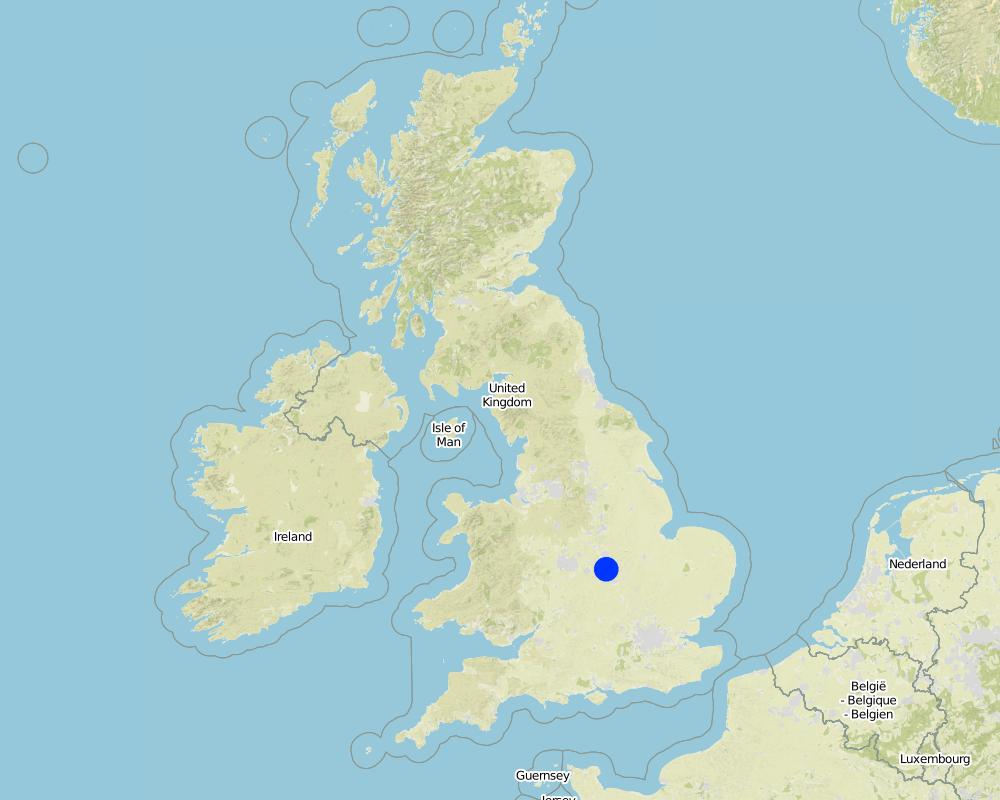Conservation agriculture [สหราชอาณาจักร]
- ผู้สร้างสรรค์:
- การอัพเดท:
- ผู้รวบรวม: Alastaire Leake
- ผู้เรียบเรียง: –
- ผู้ตรวจสอบ: Alexandra Gavilano, Fabian Ottiger, Deborah Niggli
non-inversion tillage, incorporation of crop residues, non-selective herbicides
technologies_987 - สหราชอาณาจักร
ดูส่วนย่อย
ขยายทั้งหมด ย่อทั้งหมด1. ข้อมูลทั่วไป
1.2 รายละเอียดที่ติดต่อได้ของผู้รวบรวมและองค์กรที่เกี่ยวข้องในการประเมินและการจัดเตรียมทำเอกสารของเทคโนโลยี
ชื่อของโครงการซึ่งอำนวยความสะดวกในการทำเอกสารหรือการประเมินเทคโนโลยี (ถ้าเกี่ยวข้อง)
Soil and water protection (EU-SOWAP)ชื่อของโครงการซึ่งอำนวยความสะดวกในการทำเอกสารหรือการประเมินเทคโนโลยี (ถ้าเกี่ยวข้อง)
Book project: where the land is greener - Case Studies and Analysis of Soil and Water Conservation Initiatives Worldwide (where the land is greener)ชื่อขององค์กรซึ่งอำนวยความสะดวกในการทำเอกสารหรือการประเมินเทคโนโลยี (ถ้าเกี่ยวข้อง)
Game & Wildlife Conservation Trust - สหราชอาณาจักร1.3 เงื่อนไขการใช้ข้อมูลที่ได้บันทึกผ่านทาง WOCAT
วันที่เก็บรวบรวมข้อมูล(ภาคสนาม) :
01/10/2004
ผู้รวบรวมและวิทยากรหลักยอมรับเงื่อนไขเกี่ยวกับการใช้ข้อมูลที่ถูกบันทึกผ่านทาง WOCAT:
ใช่
1.5 อ้างอิงไปที่แบบสอบถามเรื่องแนวทาง SLM
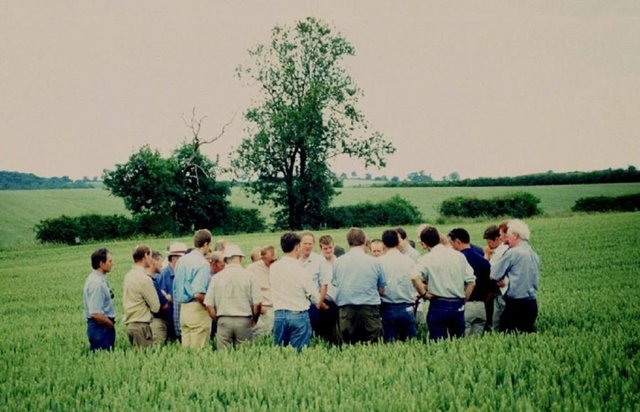
Soil management initiative [สหราชอาณาจักร]
An independent organisation that promotes the adoption of appropriate soil management practices, especially conservation agriculture, within England.
- ผู้รวบรวม: Alastaire Leake
2. การอธิบายลักษณะของเทคโนโลยี SLM
2.1 การอธิบายแบบสั้น ๆ ของเทคโนโลยี
คำจำกัดความของเทคโนโลยี:
Improved soil management based on non-inversion tillage for cost-effective and timely crop establishment.
2.2 การอธิบายแบบละเอียดของเทคโนโลยี
คำอธิบาย:
Conservation agriculture (CA), involving superficial non-inversion tillage, began to be widely taken up in England following advances in seed drill technology, non-selective herbicides and straw-chopping combine harvesters in the late 1980s.
This case focuses on the Game Conservancy Trust’s Allerton Project at Loddington, which in 2000 pooled resources with its neighbour to purchase a single set of cultivation equipment, and replaced conventional mouldboard ploughing (with its multiple cultivations) by state-of-the-art CA. Contract services offered by the joint venture means that 1,000 ha are now covered each year. The main winter crops are wheat, oats, and oilseed rape. Beans are sown in the spring. The heavy clay loam is vulnerable to excessive surface moisture, restricting crop establishment
‘windows’.
Immediately after harvest the soil is loosened and straw incorporated, and then soil is consolidated (using a ‘cultivation train’ combining two machines: the ‘Simba Solo’ and the ‘Cultipress’). This encourages up to 60% of the weeds to emerge in a ‘stale seedbed’. Spraying then removes all the weeds and volunteer plants of previous crops. This is followed by a light surface tillage, using the ‘Väderstad Rapid Cultivator Drill’, before sowing into the seedbed created. Equipment comprises implements with tines and/or discs which create a tilth to around 10 cm
without inverting the soil. Cambridge rollers are then used to consolidate the sown land. After crop maturity, combine harvesting takes place - with simultaneous chopping of straw/crop residues. A trash rake is used to disperse the chopped straw. This way excessive trash is incorporated rapidly into the soil. Compaction may arise in the transition phase, because of the lack of soil loosening through ploughing: minimising traffic, keeping to tramlines and headlands can all help. In time, increases in soil organic matter content and earthworm biomass make compaction less of a problem. The problem of slugs can be reduced by improving seed-to-soil contact, and by drilling deeper.
Purpose of the Technology: The main purpose of conservation agriculture is cost effective, timely and rapid crop establishment, under good soil conditions. High-speed operations are the key. Compared with conventional ploughing, labour is saved and fuel costs lowered. However, an additional application of herbicides represents an extra expenditure. Yields per hectare haven’t risen but the key difference is that about four times as many hectares can be prepared in time for autumn planting under conservation tillage, thus improving overall production. Incorporation of crop residues improves soil structure and leads to a more friable, less erodible topsoil.
2.3 รูปภาพของเทคโนโลยี
2.5 ประเทศภูมิภาค หรือสถานที่ตั้งที่เทคโนโลยีได้นำไปใช้และได้รับการครอบคลุมโดยการประเมินนี้
ประเทศ:
สหราชอาณาจักร
ภูมิภาค/รัฐ/จังหวัด:
Leicestershire
Map
×2.7 คำแนะนำของเทคโนโลยี
ให้ระบุว่าเทคโนโลยีถูกแนะนำเข้ามาอย่างไร:
- ทางโครงการหรือจากภายนอก
3. การจัดประเภทของเทคโนโลยี SLM
3.1 วัตถุประสงค์หลักของเทคโนโลยี
- ลด ป้องกัน ฟื้นฟู การเสื่อมโทรมของที่ดิน
3.2 ประเภทของการใช้ที่ดินในปัจจุบันที่ได้นำเทคโนโลยีไปใช้

พื้นที่ปลูกพืช
- การปลูกพืชล้มลุกอายุปีเดียว
พืชหลัก (พืชเศรษฐกิจและพืชอาหาร):
Major cash crop: Wheat, oats,oilseed rape
แสดงความคิดเห็น:
Major land use problems (compiler’s opinion): Traditional inversion tillage is slow and costly. By moving to high speed non-inversion conservation tillage farmers can
spread costs over a larger area and maximise the area under winter crops. The speed at which ground can be worked in the autumn is critical: one month earlier planting can mean an extra ton in cereal yield.
3.3 ข้อมูลเพิ่มเติมเกี่ยวกับการใช้ที่ดิน
การใช้น้ำของที่ดินที่มีการใช้เทคโนโลยีอยู่:
- น้ำฝนร่วมกับการชลประทาน
จำนวนของฤดูเพาะปลูกต่อปี:
- 1
ระบุ:
Longest growing period in days: 330Longest growing period from month to month: Mar - Dec
3.4 กลุ่ม SLM ที่ตรงกับเทคโนโลยีนี้
- การรบกวนดินให้น้อยที่สุด
3.5 กระจายตัวของเทคโนโลยี
แสดงความคิดเห็น:
Total area covered by the SLM Technology is 10 m2.
3.6 มาตรการ SLM ที่ประกอบกันเป็นเทคโนโลยี
3.7 รูปแบบหลักของการเสื่อมโทรมของที่ดินที่ได้รับการแก้ไขโดยเทคโนโลยี

การกัดกร่อนของดินโดยน้ำ
- Wt (Loss of topsoil): การสูญเสียดินชั้นบนหรือการกัดกร่อนที่ผิวดิน
- Wg (Gully erosion): การกัดกร่อนแบบร่องธารหรือการทำให้เกิดร่องน้ำเซาะ

การเสื่อมโทรมของดินทางด้านเคมี
- Cn (Fertility decline): ความอุดมสมบูรณ์และปริมาณอินทรียวัตถุในดินถูกทำให้ลดลงไป (ไม่ได้เกิดจากสาเหตุการกัดกร่อน)
แสดงความคิดเห็น:
Main type of degradation addressed: Wt: loss of topsoil / surface erosion, Wg: gully erosion / gullying, Cn: fertility decline and reduced organic matter content
3.8 การป้องกัน การลดลง หรือการฟื้นฟูความเสื่อมโทรมของที่ดิน
ระบุเป้าหมายของเทคโนโลยีกับความเสื่อมโทรมของที่ดิน:
- ลดความเสื่อมโทรมของดิน
4. ข้อมูลจำเพาะด้านเทคนิค กิจกรรมการนำไปปฏิบัติใช้ ปัจจัยนำเข้า และค่าใช้จ่าย
4.2 ข้อมูลจำเพาะด้านเทคนิคและการอธิบายแบบแปลนทางเทคนิค
Technical knowledge required for field staff / advisors: high
Technical knowledge required for land users: moderate
Main technical functions: improvement of ground cover, increase in organic matter, increase of infiltration, improvement of soil structure, increase in soil fertility
4.6 การบำรุงรักษาสภาพหรือกิจกรรมที่เกิดขึ้นเป็นประจำ
| กิจกรรม | ประเภทของมาตรการ | ช่วงระยะเวลา/ความถี่ | |
|---|---|---|---|
| 1. | Loosen the soil and incorporate the straw using the ‘Simba Solo’; soil consolidation, using the 'Cultipress' | จัดการพืช | immediately post-harvest / |
| 2. | Spray the stale seedbed to remove all the weeds/volunteer plants of previous crops | จัดการพืช | mid September |
| 3. | Light surface tillage and sowing into the seedbed; using the 'Väderstad Rapid Cultivator Drill' | จัดการพืช | usually end September, just after spraying |
| 4. | Consolidation of the sown land | จัดการพืช | using Cambridge rollers |
| 5. | After crop maturity, combine harvesting - with simultaneous chopping of straw | จัดการพืช | |
| 6. | Disperse the chopped straw, using a trash rake. | จัดการพืช |
4.7 ค่าใช้จ่ายของปัจจัยนำเข้าและกิจกรรมที่เกิดขึ้นเป็นประจำที่ต้องการการบำรุงรักษา (ต่อปี)
| ปัจจัยนำเข้า | หน่วย | ปริมาณ | ค่าใช้จ่ายต่อหน่วย | ค่าใช้จ่ายทั้งหมดต่อปัจจัยนำเข้า | %ของค่าใช้จ่ายที่ก่อให้เกิดขึ้นโดยผู้ใช้ที่ดิน | |
|---|---|---|---|---|---|---|
| อุปกรณ์ | Machine use | ha | 1.0 | 180.0 | 180.0 | 100.0 |
| ค่าใช้จ่ายทั้งหมดของการบำรุงรักษาสภาพเทคโนโลยี | 180.0 | |||||
4.8 ปัจจัยสำคัญที่สุดที่มีผลกระทบต่อค่าใช้จ่าย
ปัจจัยสำคัญที่สุดที่มีผลกระทบต่อค่าใช้จ่ายต่างๆ:
No establishment costs for purchase of special conservation tillage equipment are included here – though this
investment is considerable. Tractors of sufficient horsepower and a couple of special machines (see above) are needed. The investment in this case was shared by two neighbouring farms, who implemented conservation agriculture on a joint venture basis. The only costs presented in the table above are total recurrent annual costs for tillage operations. This total, US$ 180, compares with US$ 260 for conventional tillage operations. While drilling is not included in the above conventional tillage calculation, subsequent application of additional herbicides represents an extra cost of conservation tillage of about US$ 80/ha. In balance the costs per hectare are broadly similar. Labour inputs however are reduced considerably as a proportion: the Allerton farm with its 260 ha of arable land is operated by a farm manager and just one farm worker.
5. สิ่งแวดล้อมทางธรรมชาติและของมนุษย์
5.1 ภูมิอากาศ
ฝนประจำปี
- < 250 ม.ม.
- 251-500 ม.ม.
- 501-750 ม.ม.
- 751-1,000 ม.ม.
- 1,001-1,500 ม.ม.
- 1,501-2,000 ม.ม.
- 2,001-3,000 ม.ม.
- 3,001-4,000 ม.ม.
- > 4,000 ม.ม.
เขตภูมิอากาศเกษตร
- กึ่งชุ่มชื้น
Thermal climate class: temperate
5.2 สภาพภูมิประเทศ
ค่าเฉลี่ยความลาดชัน:
- ราบเรียบ (0-2%)
- ลาดที่ไม่ชัน (3-5%)
- ปานกลาง (6-10%)
- เป็นลูกคลื่น (11-15%)
- เป็นเนิน (16-30%)
- ชัน (31-60%)
- ชันมาก (>60%)
ธรณีสัณฐาน:
- ที่ราบสูง/ที่ราบ
- สันเขา
- ไหล่เขา
- ไหล่เนินเขา
- ตีนเนิน
- หุบเขา
ระดับความสูง:
- 0-100 เมตร
- 101-500 เมตร
- 501-1,000 เมตร
- 1,001-1,500 เมตร
- 1,501-2,000 เมตร
- 2,001-2,500 เมตร
- 2,501-3,000 เมตร
- 3,001-4,000 เมตร
- > 4,000 เมตร
5.3 ดิน
ค่าเฉลี่ยความลึกของดิน:
- ตื้นมาก (0-20 ซ.ม.)
- ตื้น (21-50 ซ.ม.)
- ลึกปานกลาง (51-80 ซ.ม.)
- ลึก (81-120 ซ.ม.)
- ลึกมาก (>120 ซ.ม.)
เนื้อดิน (ดินชั้นบน):
- ปานกลาง (ดินร่วน ทรายแป้ง)
- ละเอียด/หนัก (ดินเหนียว)
อินทรียวัตถุในดิน:
- ต่ำ (<1%)
(ถ้ามี) ให้แนบคำอธิบายเรื่องดินแบบเต็มหรือระบุข้อมูลที่มีอยู่ เช่น ชนิดของดิน ค่า pH ของดินหรือความเป็นกรดของดิน ความสามารถในการแลกเปลี่ยนประจุบวก ไนโตรเจน ความเค็ม เป็นต้น:
Soil fertility is medium
Soil drainage/infiltration is medium
Soil water storage capacity is medium
5.6 ลักษณะของผู้ใช้ที่ดินที่นำเทคโนโลยีไปปฏิบัติใช้
แนวทางการตลาดของระบบการผลิต:
- ทำการค้า/การตลาด
ระบุลักษณะอื่นๆที่เกี่ยวข้องของผู้ใช้ที่ดิน:
Off-farm income specification: contract work on other farms is an important source of additional revenue for the ‘joint venture’ of the two neighbouring farms
5.7 พื้นที่เฉลี่ยของที่ดินที่เป็นเจ้าของหรือเช่าโดยผู้ใช้ที่ดินที่นำเทคโนโลยีไปปฏิบัติใช้
- < 0.5 เฮกตาร์
- 0.5-1 เฮกตาร์
- 1-2 เฮกตาร์
- 2-5 เฮกตาร์
- 5-15 เฮกตาร์
- 15-50 เฮกตาร์
- 50-100 เฮกตาร์
- 100-500 เฮกตาร์
- 500-1,000 เฮกตาร์
- 1,000-10,000 เฮกตาร์
- >10,000 เฮกตาร์
5.8 กรรมสิทธิ์ในที่ดิน สิทธิในการใช้ที่ดินและสิทธิในการใช้น้ำ
กรรมสิทธิ์ในที่ดิน:
- บริษัท
- รายบุคคล ได้รับสิทธิครอบครอง
สิทธิในการใช้ที่ดิน:
- เช่า
- รายบุคคล
6. ผลกระทบและสรุปคำบอกกล่าว
6.1 ผลกระทบในพื้นที่ดำเนินการ (On-site) จากการใช้เทคโนโลยี
ผลกระทบทางด้านเศรษฐกิจและสังคม
การผลิต
การผลิตพืชผล
แสดงความคิดเห็น/ระบุ:
Reduced yields in the early years (due to initial compaction)
รายได้และค่าใช้จ่าย
รายได้จากฟาร์ม
ผลกระทบด้านสังคมวัฒนธรรมอื่น ๆ
สถาบันของชุมชน
สถาบันแห่งชาติ
SLM หรือความรู้เรื่องความเสื่อมโทรมของที่ดิน
การบรรเทาความขัดแย้ง
ผลกระทบด้านนิเวศวิทยา
วัฐจักรน้ำหรือน้ำบ่า
น้ำไหลบ่าที่ผิวดิน
การระบายน้ำส่วนเกิน
ดิน
ความชื้นในดิน
สิ่งปกคลุมดิน
การสูญเสียดิน
อินทรียวัตถุในดิน/ต่ำกว่าดินชั้น C
ผลกระทบด้านนิเวศวิทยาอื่น ๆ
Carbon sequestration
Loss of nutrients (through leaching)
Biodiversity enhancement
แสดงความคิดเห็น/ระบุ:
Above and below ground
Soil structure
Organic matter depletion (in certain sandy soils)
Reliance on herbicides
6.2 ผลกระทบนอกพื้นที่ดำเนินการ (Off-site) จากการใช้เทคโนโลยี
น้ำท่วมพื้นที่ท้ายน้ำ
การทับถมของดินตะกอนพื้นที่ท้ายน้ำ
การเกิดมลพิษในน้ำบาดาลหรือแม่น้ำ
ตะกอนที่ถูกพัดพามาโดยลม
6.4 การวิเคราะห์ค่าใช้จ่ายและผลประโยชน์ที่ได้รับ
ผลประโยชน์ที่ได้รับเปรียบเทียบกับค่าใช้จ่ายในการจัดตั้งเป็นอย่างไร (จากมุมมองของผู้ใช้ที่ดิน)
ผลตอบแทนระยะสั้น:
ด้านลบ
ผลตอบแทนระยะยาว:
ด้านบวก
ผลประโยชน์ที่ได้รับเปรียบเทียบกับค่าใช้จ่ายในการบำรุงรักษาหรือต้นทุนที่เกิดขึ้นซ้ำอีก เป็นอย่างไร (จากมุมมองของผู้ใช้ที่ดิน)
ผลตอบแทนระยะสั้น:
ด้านบวก
ผลตอบแทนระยะยาว:
ด้านบวกอย่างมาก
6.5 การปรับตัวของเทคโนโลยี
แสดงความคิดเห็น:
There is a strong trend towards spontaneous adoption of the Technology
Comments on adoption trend: Extent of adoption depends on farm size, enterprise & soil type. From 10% in 95, approx 40% of arable land in Eng is currently (04) under conservation agriculture/cultivation tillage.
Additional info: Farmers involved adopted the system without incentives other than those of timeliness, lower cost, speedier crop establishment, reduced soil erosion & benefits to wildlife. There is significant growing spontaneous adoption: the extent of adoption depends on farm size, enterprise & soil type. Editors’ comments: Conservation agriculture is rapidly catching on throughout the world. While most attention has been focussed on the Americas, a revolution is taking place in Europe also. In England, for example, around 40% of the large scale arable area is now under CA – a rise from just 10% a decade ago. CA helps to minimise costs and reduce local, and global, environmental impacts. This is a case from a leading proponent of CA in England. Comparative case studies are documented from Morocco, Australia and Kenya.
6.7 จุดแข็ง / ข้อได้เปรียบ / โอกาสของเทคโนโลยี
| จุดแข็ง / ข้อได้เปรียบ / โอกาสในทัศนคติของผู้ใช้ที่ดิน |
|---|
|
Increases soil biota (more than doubling earthworm mass) and biodiversity generally (nearly doubling the number of different organisms) How can they be sustained / enhanced? Maintain system over time to maximise these benefits. |
| จุดแข็ง / ข้อได้เปรียบ / โอกาสในทัศนคติของผู้รวบรวมหรือวิทยากรหลัก |
|---|
|
Lowers recurrent soil tillage costs – mainly due to reduction in fuel use (down by about one third) and labour (saving around one person day per hectare) How can they be sustained / enhanced? Spread over greater area to maximise cost reduction. |
|
ncreases overall farm yield (and income) by speeding up land preparation in autumn, allowing a larger area to be planted as winter crops How can they be sustained / enhanced? Ditto. |
|
Improves soil structure and physical properties in various ways How can they be sustained / enhanced? Maintain system over time to maximise these benefits. |
|
Reduces runoff (by a half), soil erosion (by two thirds), and leaching of nutrients (by three quarters) thus decreasing movement of phosphates and nitrates to streams and rivers How can they be sustained / enhanced? To improve further, combine with other measures such as adding organic matter or growing green manures and cover crops. |
|
Increases soil buffering capacity against climatic extremes (especially rainfall) through maintaining surface cover and building up soil organic matter How can they be sustained / enhanced? Maintain system over time to maximise these benefits. |
6.8 จุดอ่อน / ข้อเสียเปรียบ / ความเสี่ยงของเทคโนโลยีและวิธีการแก้ไข
| จุดอ่อน / ข้อเสียเปรียบ / ความเสี่ยงในทัศนคติของผู้รวบรวมหรือวิทยากรหลัก | มีวิธีการแก้ไขได้อย่างไร |
|---|---|
| Increased growth of grass weeds and thus greater cost of herbicides | Use ‘stale seedbeds’ – surface tillage immediately post-harvest to induce weed germination – followed by spraying. Crop rotation, spring cropping, occasional ploughing (every few years as necessary). |
| Not suitable for all soil types (not appropriate on some sandy soils) | Don’t introduce/promote CA indiscriminately. |
| Excessive surface trash/crop residues | Good chopping, then spreading and incorporation. |
| Problems with slugs | Drill seed deeper, ensure good seed-to-soil |
| Surface compaction in the early stages of conversion to conservation agriculture | Appropriate loosening of soil, using tined implement. |
7. การอ้างอิงและการเชื่อมต่อ
7.2 การอ้างอิงถึงสิ่งตีพิมพ์
หัวข้อ, ผู้เขียน, ปี, หมายเลข ISBN:
Soil Management Initiative/Department for Environment, Food and Rural Affairs (DEFRA) A guide to managing crop
establishment.. (undated).
ชื่อเรื่อง ผู้เขียน ปี ISBN:
SMI, UK (www.smi.org.uk)
หัวข้อ, ผู้เขียน, ปี, หมายเลข ISBN:
Soil Management Initiative Improved soil management for agronomic and environmental
gain.. (undated).
ชื่อเรื่อง ผู้เขียน ปี ISBN:
SMI, UK(www.smi.org.uk)
หัวข้อ, ผู้เขียน, ปี, หมายเลข ISBN:
Soil Management Initiative/Väderstad Target on establishment: innovation for the future of farming.. (undated).
ชื่อเรื่อง ผู้เขียน ปี ISBN:
SMI, UK(www.smi.org.uk)
ลิงก์และโมดูล
ขยายทั้งหมด ย่อทั้งหมดลิงก์

Soil management initiative [สหราชอาณาจักร]
An independent organisation that promotes the adoption of appropriate soil management practices, especially conservation agriculture, within England.
- ผู้รวบรวม: Alastaire Leake
โมดูล
ไม่มีโมดูล


